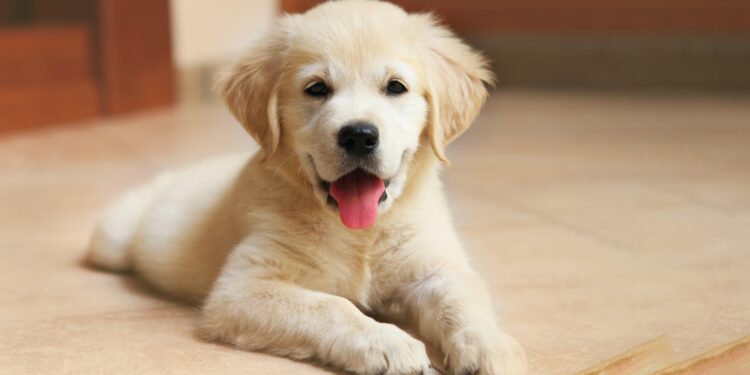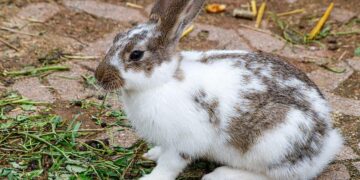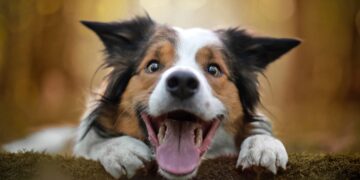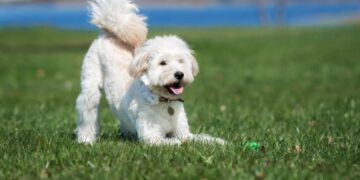Table of Contents
I still remember the silence in the car on the way home, punctuated only by the tiny, whimpering breaths coming from the laundry basket on the passenger seat.
Inside was Leo, my new Golden Retriever puppy, all fluff and oversized paws.
At just six weeks old, he was impossibly small, impossibly vulnerable.
The joy I’d felt just an hour earlier was rapidly being replaced by a cold wave of panic.
That night, I fell down the internet rabbit hole.
One forum screamed that if I let him meet another dog before he was fully vaccinated, he would certainly die from Parvovirus.1
Another thread insisted that if I didn’t socialize him
right now, he was destined for a lifetime of fear and aggression.2
I read horror stories of puppies taken from their mothers too soon, doomed to have behavioral problems forever.3
I was trapped in what I now call the “Puppy Paradox”: caught between the urgent, non-negotiable biological clock of socialization and the dire, terrifying warnings about disease.
Every piece of advice seemed to contradict the last, and with every passing hour, I felt the window of opportunity to do the “right thing”—whatever that was—slamming shut.
I felt like I had already failed him.
This guide is the article I wish I’d had that night.
It’s not just a list of training cues.
It’s a new way to think about raising a puppy, especially one as young as yours.
It’s the story of how I stopped trying to train a six-week-old puppy and started cultivating a confident, happy dog.
In a Nutshell: Your First-Week Survival Guide
For the overwhelmed owner who needs answers now, here is the core philosophy:
- Socialization is Not Optional, It’s Essential: The American Veterinary Society of Animal Behavior (AVSAB) is clear: behavioral problems from a lack of early socialization are the number one cause of death for dogs under three years old.4 The risk of developing lifelong fear and aggression far outweighs the manageable risk of disease.5 Your job is to socialize
safely, not to quarantine. - Management is Your Most Powerful Training Tool: A six-week-old puppy has virtually no bladder control and an attention span measured in seconds.7 Your primary goal is not to teach complex commands, but to manage their environment so they cannot fail. Every accident prevented is a training victory.
- Punishment is Counterproductive: Your puppy is not being “bad” or “stubborn”; they are being a baby. Using punishment, verbal corrections, or force will only create fear, damage your bond, and make learning harder.9 Your relationship must be built on trust, not intimidation.
- Embrace the Gardener’s Mindset: Stop thinking of yourself as a programmer trying to input commands. Start thinking of yourself as a gardener. You must first prepare the soil (management), provide the right amount of sun and water (socialization), and only then can you gently guide the seedling’s growth (foundational skills).
Part 1: The Six-Week Panic: My Story and Your New Reality
“Have I Already Ruined My Puppy?”
That first week with Leo was a blur of anxiety.
I followed the most common advice I could find: keep him inside, away from everything, until his shots were done.
I bought a stack of puppy pads and braced for a month of house arrest.
I tried to teach him “sit,” getting frustrated when his attention wandered after three seconds.
He was a whirlwind of needle-sharp teeth and endless puddles.
I felt like a complete failure, convinced I was creating a tiny, unsocialized monster.
The standard advice wasn’t just unhelpful; it was actively making things worse.
It was creating a stressed-out owner and a confused puppy.
The core problem is that most puppy advice is designed for an eight-to-ten-week-old puppy, the age they should ideally come home.
A six-week-old is a different creature entirely, with unique vulnerabilities that standard methods fail to address.
The Problem with “Standard Advice”: Why It Fails the Very Young
The Quarantine Trap: A Well-Intentioned Path to Fear
The most pervasive and damaging piece of advice given to new puppy owners is to keep their puppy isolated until their vaccination series is complete, often around 16 weeks of age.
This advice, while born from a genuine concern for physical health, is dangerously outdated and ignores a far greater threat to your puppy’s long-term well-being.
Leading veterinary organizations, including the American Veterinary Society of Animal Behavior (AVSAB) and the American Veterinary Medical Association (AVMA), have issued strong position statements on this very topic.
Their consensus is unequivocal: puppies should receive socialization before they are fully vaccinated.5
Why? Because behavioral issues stemming from poor socialization are the leading cause of death for dogs under three years of age, primarily through relinquishment to shelters and subsequent euthanasia.4
This is because of a non-negotiable biological timeline.
The primary socialization period for a puppy occurs roughly between 3 and 16 weeks of age.12
During this critical developmental window, a puppy’s brain is uniquely wired to be receptive to new people, animals, and experiences.
Their natural curiosity outweighs their fear.5
After this window begins to close, their default response to novelty shifts from curiosity to fear.15
An experience that a 10-week-old puppy would find interesting, an unsocialized 20-week-old puppy may find terrifying.
Therefore, the “wait for vaccines” advice presents a false choice.
It pits a manageable physical risk (disease) against a permanent and often irreversible behavioral one (fear, anxiety, and aggression).
The expert recommendation is to mitigate the former in service of preventing the latter.
By waiting until 16 weeks, you have missed almost the entire critical period.
You have chosen to avoid a small statistical risk of illness at the cost of a very high risk of creating a fearful, anxious, or aggressive adult dog.
The Punishment Fallacy: Why “Discipline” Backfires
When faced with a puppy that is peeing on the rug and nipping at their hands, a frustrated owner’s first instinct might be to “correct” the behavior.
They might yell “No!”, give a tap on the nose, or follow other misguided advice rooted in dominance theory.
This is a catastrophic mistake.
A six-week-old puppy is not capable of being malicious, stubborn, or dominant.16
They are simply acting out the normal, reflexive behaviors of a baby animal.
They pee because their bladder is tiny and undeveloped.
They bite because that is how they explore the world and initiate play.12
Punishing these behaviors is like scolding a human baby for crying or needing a diaper change.
Scientific research has consistently shown that training methods based on aversion and punishment—including verbal scolding, physical corrections, and intimidation—have severe negative consequences.
These methods are directly linked to increased stress, higher levels of the stress hormone cortisol, chronic anxiety, a pessimistic outlook on life, and a higher incidence of aggression.10
When you punish a puppy, you are not teaching it what to do instead; you are simply teaching it that you are unpredictable and frightening.9
This erodes the foundation of trust upon which your entire relationship should be built.
Furthermore, punishment actively hinders the learning process.
A brain flooded with stress hormones is in a state of “fight, flight, or freeze,” not a state of calm focus required for learning.
When you punish a puppy for a potty accident, they don’t learn “I should only pee outside.” They learn, “It is dangerous to pee in front of my human.” This leads to them hiding to eliminate, making house-training infinitely more difficult.
This creates a vicious cycle: the puppy performs a normal behavior, the owner punishes it, the puppy becomes stressed and confused, making learning impossible, which leads to more “mistakes” and more punishment.
The World of a Six-Week-Old Puppy: A Reality Check
To break this cycle, you must first ground yourself in the biological reality of the tiny creature in your care.
This is not a small version of an adult dog.
A six-week-old puppy is, in many ways, still a neonate.
- Sleep is Paramount: They need 16 to 20 hours of sleep per day.7 This is not laziness; it is a biological necessity for their brain and body to grow. Overtired puppies, much like overtired toddlers, become cranky, irritable, and extra “bitey.”
- Bladder Control is Minimal: A common rule of thumb is that a puppy can hold their bladder for one hour per month of age, plus one. For a six-week-old, this means they can realistically hold it for about an hour—at most.7 Expecting more is setting them up to fail.
- Attention Spans are Fleeting: Their ability to focus is incredibly short.8 Formal “training sessions” that last more than a minute or two are not only ineffective but can create frustration for both of you. Learning must happen in short, playful bursts.
- Senses are Developed, But Coping Skills Are Not: By six weeks, their senses of sight, hearing, and smell are fully functional.24 However, their ability to process a barrage of new information is limited. They can become easily overwhelmed, a state known as “trigger stacking,” which leads to fear or frantic behavior.
Understanding these limitations is the key to shifting your entire approach.
At this age, the most effective and humane form of “training” is not active instruction, but proactive management.
Your job is not to be a drill sergeant correcting mistakes after they happen.
Your job is to be an architect, designing a world where your puppy is set up for success from the very beginning.
Every accident you prevent by taking them out on time is a house-training win.
Every nap they take peacefully in their crate is a behavioral win.
You are not reacting to their behavior; you are shaping their world to guide it.
Part 2: The Gardener’s Epiphany: A New Way to See Your Puppy
My breakthrough with Leo came one afternoon after a particularly disastrous attempt at a “training session.” He was nipping, I was frustrated, and we were both miserable.
I slumped onto the kitchen floor, defeated.
I had been trying to act like a computer programmer, inputting commands—”sit,” “no bite”—and expecting a predictable output.
When the machine “malfunctioned,” I got frustrated.
It was then that I had my epiphany.
I wasn’t programming a machine.
I was tending a garden.
This analogy, drawn from the patient world of horticulture, changed everything.26
A gardener doesn’t yell at a seedling for not growing fast enough.
They don’t punish a plant for wilting.
Instead, a master gardener understands that growth is a process that cannot be forced.
Their job is to create the perfect conditions for that growth to occur naturally.28
- They meticulously prepare the soil, ensuring it has the right nutrients and structure.
- They provide the perfect amount of sunshine and water, understanding that too much or too little can be harmful.
- They protect the seedling from pests and harsh weather.
- They gently guide its growth with supports, pruning away what’s not needed to encourage healthy development.
This is the mindset you must adopt.
You are not your puppy’s commander; you are their cultivator.
This framework shifts your role from one of control and correction to one of patience, empathy, and proactive care.
It is a kinder, more respectful, and profoundly more effective way to raise a dog.
Part 3: The Master Gardener’s Blueprint: A 3-Pillar Framework for Your Puppy’s First Month
This framework is your blueprint for the next four to six weeks.
It is organized into three pillars, mirroring the work of a gardener.
Focus on these pillars, and you will be laying the foundation for a lifetime of confident, calm companionship.
Pillar 1: Preparing the Soil (Management, Routine, and House Training)
Just as a plant needs healthy soil to thrive, your puppy needs a safe, predictable environment to feel secure.
This is the most important pillar at this age.
Creating Your “Greenhouse”: A Predictable, Safe World
Your first task is to create a “greenhouse”—a controlled environment where your puppy can’t get into trouble.
- The Puppy-Proofed Zone: Designate one area of your home, like a kitchen or a room with easy-to-clean floors, as the puppy’s main living space. Use baby gates or an exercise pen to block it off. Remove anything you don’t want chewed: electrical cords, shoes, rugs, etc. This isn’t just about protecting your belongings; it’s about preventing your puppy from learning the rewarding behavior of destructive chewing.
- The Crate as a Safe Den: The crate is not a cage or a place for punishment. It is your single most valuable management tool. It’s a safe, cozy den that fulfills a dog’s natural instinct to have a secure resting place.21 It is essential for facilitating the 16-20 hours of sleep your puppy needs and is the bedrock of a successful house-training plan. Make the crate a wonderful place by feeding meals in it and leaving special toys inside.30
- The Power of Routine: Dogs, especially puppies, thrive on predictability.31 A consistent schedule for waking up, potty breaks, meals, playtime, and bedtime helps them feel secure because they know what to expect. This reduces anxiety and makes learning easier.
A Foolproof Potty-Training System
House-training a six-week-old puppy is about management and prevention, not correction.
Your goal is to prevent accidents from ever happening.
- High Frequency is Key: Take your puppy out every hour, on the hour, when they are awake.7 Set a timer on your phone. Do not wait for them to signal.
- Timing is Everything: In addition to the hourly schedule, take them out immediately after they wake up from a nap, within minutes of finishing a meal, and after a session of play.30
- Use a Designated Spot and Cue: Always take your puppy on a leash to the same spot in your yard. As they begin to eliminate, say your chosen cue, like “Go potty,” in a calm, quiet voice.21 This builds an association that will be invaluable later.
- Reward Lavishly: The moment they finish, praise them enthusiastically and give them a very high-value treat (a tiny piece of chicken or cheese, not just their regular kibble).22 This is positive reinforcement in its purest form.
- Accident Protocol: If an accident happens, it is your fault, not the puppy’s. Do not scold, punish, or rub their nose in it. This will only teach them to fear you.21 Silently clean it up with an enzymatic cleaner designed to eliminate pet odors. If you catch them in the act, make a gentle sound to interrupt them, immediately scoop them up, and rush them outside. If they finish outside, praise them lavishly.
| The 6-Week-Old Puppy’s Daily Schedule (Sample) | |
| Time | Activity |
| 7:00 AM | Wake up, immediately outside to potty spot. Praise and reward. |
| 7:15 AM | Mealtime (in crate with door open). |
| 7:30 AM | Potty break. |
| 7:35 AM | Gentle play / Socialization exposure (e.g., sit on lap while watching traffic from window). |
| 8:00 AM | Potty break, then into crate with a safe chew toy for a nap. |
| 10:00 AM | Wake up, immediately outside to potty spot. Praise and reward. |
| 10:15 AM | Short (5-10 min) exploration in puppy-proofed area or yard. |
| 10:30 AM | Potty break, then back into crate for a nap. |
| 12:30 PM | Wake up, immediately outside to potty spot. Praise and reward. |
| 12:45 PM | Mealtime. |
| 1:00 PM | Potty break. |
| 1:05 PM | Gentle handling exercises / Socialization exposure (e.g., listen to recorded sounds). |
| 1:30 PM | Potty break, then into crate for a nap. |
| 3:30 PM | Wake up, immediately outside to potty spot. Praise and reward. |
| 3:45 PM | Gentle play / Socialization exposure (e.g., meet a calm, vaccinated adult dog in yard). |
| 4:15 PM | Potty break, then into crate for a nap. |
| 5:30 PM | Wake up, immediately outside to potty spot. Praise and reward. |
| 5:45 PM | Mealtime. |
| 6:00 PM | Potty break. |
| 6:05 PM | Family time in puppy-proofed area, focus on calm interaction. |
| 7:00 PM | Potty break, then into crate for a nap. |
| 9:00 PM | Wake up, immediately outside to potty spot. Praise and reward. |
| 9:15 PM | Last meal/snack. Water bowl picked up for the night. |
| 9:30 PM | Quiet cuddle time. |
| 10:00 PM | Final potty break, then into crate for the night. |
| Overnight | Set alarm for at least one, possibly two, potty breaks during the night. |
This schedule provides a concrete example of how to structure the day around the puppy’s biological needs, turning abstract advice into an actionable plan and demonstrating the principle of management as the primary training tool.7
Pillar 2: Providing Sunshine & Water (Safe Socialization and World Exposure)
If management is the soil, socialization is the sun and water that allows your puppy’s mind to grow healthy and strong.
Your goal is to provide a wide range of positive experiences that build confidence and prevent fear.
The “Safe Socialization” Protocol
This is how you solve the “Puppy Paradox.” You socialize aggressively while managing physical risk intelligently.
- Avoid High-Risk Zones: Do not take your puppy to dog parks, pet stores, or any public area where many unknown dogs congregate and where they might walk on the ground.1 The risk of encountering diseases like parvovirus is highest in these locations.
- Embrace “Paws-Off” Exposure: Socialization is not just about interaction; it’s about exposure. You can safely expose your puppy to the world without their paws ever touching contaminated ground.
- Carry Them: Use a puppy sling, backpack, or simply carry them in your arms.36
- Use a Stroller or Cart: A pet stroller or a shopping cart (with a blanket) at a dog-friendly hardware store allows them to see and hear the world from a safe bubble.35
- Go on Car Picnics: Drive to a busy park or a strip mall, park the car, roll down the windows, and let your puppy watch the world go by while you give them treats.38
- Curate Playdates: The best way for your puppy to learn dog-to-dog social skills is to interact with a calm, gentle, and fully vaccinated adult dog that you know is healthy.35 A good adult dog will teach your puppy far more about appropriate play than another puppy will.
The “100 Experiences” Challenge
The goal, popularized by trainers and behaviorists, is to expose your puppy to 100 different positive experiences before they are 16 weeks old.15
This builds a deep well of resilience and confidence.
Frame it as a fun scavenger hunt for yourself.4
- Variety is Key: Expose them to different types of people (men with beards, people in hats, children, people using canes or wheelchairs), novel objects (an opening umbrella, a vacuum cleaner running in another room, balloons), various surfaces (carpet, tile, wet grass, pavement), and sounds (traffic from a distance, recorded thunderstorms at low volume).
- Keep it Positive and Short: Each new experience should be paired with high-value treats and praise. The goal is to create a positive association: “New thing = yummy food!” Keep exposures very short, just a minute or two, and always end on a positive note.
- Never Force: If your puppy shows signs of fear (tucking tail, trying to retreat), do not force the interaction. Increase the distance from the scary thing until they are comfortable again, and try another day from farther away. Forcing them will sensitize them, making the fear worse.15
| The Safe Socialization Checklist (6-12 Weeks) | |
| Category | Experiences (check off as completed) |
| Sights | ☐ Person in a hat ☐ Person with a beard ☐ Person wearing sunglasses ☐ Person using a cane/walker ☐ Person in a wheelchair ☐ Child on a scooter (from a distance) ☐ Bicycle rolling by ☐ Stroller ☐ Open umbrella ☐ Balloons (stationary) ☐ Car with wipers on |
| Sounds (at low volume, from a distance) | ☐ Vacuum cleaner ☐ Hair dryer ☐ Doorbell / Knocking ☐ Phone ringing ☐ Recorded fireworks ☐ Recorded thunderstorms ☐ Traffic noise ☐ Children playing |
| Surfaces | ☐ Carpet ☐ Hardwood/Laminate ☐ Tile ☐ Grass (safe, private yard) ☐ Wet pavement ☐ A crinkly tarp ☐ Bubble wrap |
| People & Animals (Controlled) | ☐ Meet a calm, vaccinated adult dog ☐ Meet a gentle, dog-savvy cat ☐ Be held by a man ☐ Be held by a woman ☐ Be held by a (supervised) gentle child ☐ See people of different ethnicities |
| Environments (Paws-Off) | ☐ Car ride (in a secure crate/harness) ☐ Sit in a parked car and watch people ☐ Be carried through a pet-friendly store (e.g., hardware store) ☐ Sit on a park bench on your lap ☐ Visit a friend’s (pet-free) house |
This checklist transforms the overwhelming concept of “socialization” into a series of manageable, concrete goals, empowering the owner to act confidently on expert advice.15
Pillar 3: Tending the Seedling (Foundational Skills & Gentle Guidance)
Once the soil is prepared and the environment is providing nourishment, you can begin the delicate work of guiding your seedling’s growth.
This is not about formal obedience; it’s about teaching your puppy two critical life skills: how to communicate politely with their mouth and how to control their impulses.
Teaching a New Language: Bite Inhibition
A puppy separated from its mother and littermates at six weeks has missed out on two crucial weeks of learning bite inhibition—the ability to control the pressure of their mouth during play.2
Their littermates would have taught them this by yelping and stopping play when a bite was too hard.
Now, that job falls to you.
The goal is not to stop mouthing entirely (a natural behavior), but to teach them to be gentle.42
- Provide Feedback: When playing, allow your puppy to mouth your hand. When they bite down with uncomfortable pressure, let out a sharp, high-pitched “Ouch!” or “Yip!” and let your hand go limp.43 This mimics the feedback they would have gotten from a sibling. Note: For some puppies, this can increase excitement; if so, skip the yelp and go straight to the next step.44
- Institute a Brief Time-Out: The instant you yelp, withdraw all attention. Stand up, turn your back, or walk out of the pen for 10-20 seconds.45 This teaches the puppy that “hard bite = fun ends.”
- Redirect, Redirect, Redirect: After the brief time-out, re-engage and immediately offer an appropriate chew toy.44 Shove a toy in their mouth and praise them for chewing on it. Always have toys readily available to redirect their mouth onto something acceptable.
Planting the Seeds of Impulse Control: The “Learn to Earn” Program
This program, developed by the late veterinary behaviorist Dr. Sophia Yin, is the cornerstone of teaching a puppy impulse control and establishing you as a benevolent leader.48
It is the perfect, practical antidote to harmful “alpha” and dominance theories.50
Dominance theory suggests you must control your dog through force; “Learn to Earn” teaches that you provide leadership by controlling resources, which are earned through polite cooperation.
The core concept is simple: your puppy learns to say “please” for everything they want by automatically offering a calm behavior, primarily a sit.48
- How it Works: Instead of getting things for free or by being pushy, your puppy learns that the key to unlocking all good things (food, toys, petting, going outside) is to sit and look to you.53 You are not forcing them; you are creating a predictable world where they learn that calm, polite behavior works, and demanding, pushy behavior does not.
- Getting Started: Begin by “throwing away the food bowl”.53 Hand-feed your puppy their meals throughout the day. Wait for them to offer a sit. The moment their bottom touches the floor, say “Yes!” and give them a piece of kibble. Reward them with several more pieces for remaining seated.54
- Ignoring Unwanted Behavior: If your puppy jumps on you for attention, do not push them off or scold them. Simply stand up straight, turn your back, and ignore them completely. You are removing the reward of your attention. When they eventually give up and sit, turn back and reward them calmly.48 They quickly learn that jumping makes you go away, while sitting makes you give them attention.
This simple program teaches your puppy invaluable emotional self-control and establishes you as a trustworthy, predictable leader who is the source of all good things.49
Gentle Handling for a Lifetime of Confidence
Prepare your puppy for a lifetime of stress-free vet visits and grooming by starting now.
Create a positive conditioned emotional response to being handled.
- Keep it Short and Sweet: In sessions lasting no more than a minute, gently touch a paw, then immediately give a high-value treat. Look in an ear, give a treat. Lift their lip to see their teeth, give a treat.37
- Build Positive Associations: The goal is for the puppy to think, “Oh, she’s reaching for my paw! That means cheese is coming!” This proactive conditioning prevents the development of fear around handling that is so common in adult dogs.
Part 4: Conclusion: From Anxious Owner to Confident Gardener
Looking back at that first week with Leo, I see an owner who was trying to follow a set of broken rules for a game he didn’t understand.
The shift to the gardener’s mindset changed everything.
I stopped seeing potty accidents as failures of compliance and started seeing them as failures of my management.
I stopped seeing his nipping as aggression and started seeing it as a lack of education.
I stopped fighting against his nature and started working with it.
Instead of a battleground, our home became a greenhouse.
Instead of a drill sergeant, I became a cultivator.
And slowly, but surely, my little seedling began to thrive.
He grew into a dog who is confident in new situations, gentle with his mouth, and who looks to me for guidance not out of fear, but out of a deep-seated trust that we built, one handful of kibble at a time.
Raising a puppy, especially one brought home at six weeks, is a profound act of stewardship.
It is a marathon, not a sprint.
There will be moments of frustration and doubt.
But if you can let go of the pressure to “train” and instead embrace the role of the patient gardener, you will do more than just teach a few commands.
You will cultivate a relationship.
You will nurture a resilient spirit.
You will lay the foundation of good soil, provide the sun and the water, and have the immense joy of watching your beautiful, one-of-a-kind garden grow.
Works cited
- Was given a puppy at 6 weeks old. How can I make him comfortable? : r/Dogtraining, accessed on August 11, 2025, https://www.reddit.com/r/Dogtraining/comments/204ztr/was_given_a_puppy_at_6_weeks_old_how_can_i_make/
- 6 week old puppy : r/puppy101 – Reddit, accessed on August 11, 2025, https://www.reddit.com/r/puppy101/comments/sstsex/6_week_old_puppy/
- What do I do? My 6-week-old GSD puppy has been puking up her food (4 times) in 2 hours., accessed on August 11, 2025, https://www.quora.com/What-do-I-do-My-6-week-old-GSD-puppy-has-been-puking-up-her-food-4-times-in-2-hours
- How to Socialize a Puppy – American Kennel Club, accessed on August 11, 2025, https://www.akc.org/expert-advice/training/puppy-socialization/
- AVSAB Position Statement On Puppy Socialization – The American …, accessed on August 11, 2025, https://avsab.org/wp-content/uploads/2018/03/Puppy_Socialization_Position_Statement_Download_-_10-3-14.pdf
- Early puppy socialization classes: Weighing the risks vs. benefits – DVM360, accessed on August 11, 2025, https://www.dvm360.com/view/early-puppy-socialization-classes-weighing-risks-vs-benefits
- The Importance of an Age-Appropriate Puppy Training Schedule – Purina, accessed on August 11, 2025, https://www.purina.com/articles/dog/puppy/training/puppy-training-schedule
- How To Get Your Dog’s Attention: 3 Easy And Fun Exercises – Kaufmann’s Puppy Training, accessed on August 11, 2025, https://kaufmannspuppytraining.com/en/get-dogs-attention/
- Why Punishment Fails in Dog Training: Positive Success Strategies Ever – Absolute Dogs, accessed on August 11, 2025, https://absolute-dogs.com/blogs/gamechangers/why-punishment-fails-in-dog-training-positive-success-strategies-every-dog-needs
- Adverse Effects of Punishment – Oregon Humane Society, accessed on August 11, 2025, https://www.oregonhumane.org/portland-training/adverse-effects-of-punishment/
- Socialization of puppies and kittens – American Veterinary Medical Association, accessed on August 11, 2025, https://www.avma.org/sites/default/files/2024-09/avma-lit-review-socialization-puppies-kittens-0924.pdf
- Puppy Developmental Stages and Behaviour – Regina Humane Society Inc, accessed on August 11, 2025, https://reginahumanesociety.ca/programs-services/alternatives-to-admission/dog-behaviour-tips/puppy-developmental-stages-and-behaviour/
- vetmed.tamu.edu, accessed on August 11, 2025, https://vetmed.tamu.edu/news/pet-talk/puppy-socialization/#:~:text=One%20of%20the%20most%20important,this%20stage%2C%E2%80%9D%20Diers%20said.
- Socialization of dogs and cats | American Veterinary Medical Association, accessed on August 11, 2025, https://www.avma.org/resources-tools/animal-health-and-welfare/socialization-dogs-and-cats
- The Importance of the Critical Socialization Period (Time You Will NEVER Get Back), accessed on August 11, 2025, https://www.doggoneproblems.com/criticalsocializationperiod/
- The Culture Clash – Dogwise.com, accessed on August 11, 2025, https://www.dogwise.com/the-culture-clash/
- The Culture Clash by Jean Donaldson | eBook | Barnes & Noble®, accessed on August 11, 2025, https://www.barnesandnoble.com/w/the-culture-clash-jean-donaldson/1002981974
- Does training method matter? Evidence for the negative impact of aversive-based methods on companion dog welfare – PMC, accessed on August 11, 2025, https://pmc.ncbi.nlm.nih.gov/articles/PMC7743949/
- The use of punishment and negative reinforcement in dog training, accessed on August 11, 2025, https://www.ava.com.au/policy-advocacy/policies/companion-animals-dog-behaviour/the-use-of-punishment-and-negative-reinforcement-in-dog-training/
- Does training method matter? Evidence for the negative impact of aversive-based methods on companion dog welfare | PLOS One, accessed on August 11, 2025, https://journals.plos.org/plosone/article?id=10.1371/journal.pone.0225023
- Behavior Guide for Your New Puppy | Veterinary Medical Center, accessed on August 11, 2025, https://vmc.vet.osu.edu/resources/behavior-guide-your-new-puppy
- Puppy Training: How & When to Potty Train a Puppy | Purina US, accessed on August 11, 2025, https://www.purina.com/articles/dog/puppy/training/how-to-potty-train-a-puppy
- Dog Training Fails: Why Doesn’t Your Dog Learn?, accessed on August 11, 2025, https://www.gcdogtraining.com/dog-training-fails-why-doesnt-your-dog-learn/
- Puppy Development From 1 to 8 Weeks – The Spruce Pets, accessed on August 11, 2025, https://www.thesprucepets.com/puppy-development-part-1-2804676
- The Puppy Timeline: Physical And Mental Changes | VMBS News, accessed on August 11, 2025, https://vetmed.tamu.edu/news/pet-talk/puppy-timeline-part-1/
- Dog Training is Like Weeding A Garden – Smart Dog University, accessed on August 11, 2025, https://smartdoguniversity.com/dog-training-is-like-weeding-a-garden/
- How Training Your Dog is Like Tending a Garden | by Get Sit Done Dogs | Medium, accessed on August 11, 2025, https://medium.com/@getsitdonedogtraining/how-training-your-dog-is-like-tending-a-garden-7e7c89ee40b6
- Preparing a Garden for a Puppy – Treehugger, accessed on August 11, 2025, https://www.treehugger.com/preparing-garden-for-puppy-7479700
- The defeat and despair of gardening with dogs | – GardenDrum, accessed on August 11, 2025, https://gardendrum.com/2016/11/17/defeat-despair-gardening-dogs/
- How to Potty Train Puppies: A Comprehensive Guide for Success – American Kennel Club, accessed on August 11, 2025, https://www.akc.org/expert-advice/training/how-to-potty-train-a-puppy/
- Can Dogs Have Developmental Delays? – Collie Chatter, accessed on August 11, 2025, https://colliechatter.com/can-dogs-have-developmental-delays/
- How to Potty Train a Puppy – PetMD, accessed on August 11, 2025, https://www.petmd.com/dog/general-health/how-to-potty-train-a-puppy
- How to Potty Train a Puppy: Essential Housebreaking Tips for Success, accessed on August 11, 2025, https://www.humaneworld.org/en/resources/how-potty-train-your-dog-or-puppy
- How to Potty Train a Puppy – WebMD, accessed on August 11, 2025, https://www.webmd.com/pets/dogs/house-training-your-puppy
- Training Tips For Safe Socialization For Your Puppy Before Full Vaccination, accessed on August 11, 2025, https://caninelearningacademy.com/puppy-socialization-vaccination/
- Did you just bring a puppy home? Try out this socialization method! – Reddit, accessed on August 11, 2025, https://www.reddit.com/r/puppy101/comments/15pypgv/did_you_just_bring_a_puppy_home_try_out_this/
- help please – Positively | Victoria Stilwell | Forum, accessed on August 11, 2025, https://forum.positively.com/viewtopic.php?t=4193
- What did you do you puppy socialization before fully vaccinated? : r/puppy101 – Reddit, accessed on August 11, 2025, https://www.reddit.com/r/puppy101/comments/18elklo/what_did_you_do_you_puppy_socialization_before/
- Puppies: Puppy Vaccinations and Socialization – San Diego Humane Society, accessed on August 11, 2025, https://resources.sdhumane.org/Resource_Center/Behavior_and_Training/Dogs_and_Puppies/Adopting%3A_Puppies/Puppies%3A_Puppy_Vaccinations_and_Socialization
- Puppy Socialization | Positively.com, accessed on August 11, 2025, https://positively.com/dog-training/article/foundations-puppy-socialization
- PUPPY SOCIALIZATION AND VACCINATIONS, accessed on August 11, 2025, https://hssaz.org/wp-content/uploads/2020/05/26-Puppy-Socialization-and-27-Checklist-Combined.pdf
- Teaching Bite Inhibition and Dealing with Rough Puppy Play – Oregon Humane Society, accessed on August 11, 2025, https://www.oregonhumane.org/portland-training/teaching-bite-inhibition-and-dealing-with-rough-puppy-play/
- Mouthing, Nipping and Biting in Puppies – ASPCA, accessed on August 11, 2025, https://www.aspca.org/pet-care/dog-care/common-dog-behavior-issues/mouthing-nipping-and-biting-puppies
- How to Stop Puppy Biting and Train Bite Inhibition – American Kennel Club, accessed on August 11, 2025, https://www.akc.org/expert-advice/training/stop-puppy-biting/
- Teaching Bite Inhibition – Dog Star Daily |, accessed on August 11, 2025, https://www.dogstardaily.com/book/export/html/1184
- Mouthy Pups – It’s Normal. Let’s Teach Them Bite Inhibition. – Seattle Humane, accessed on August 11, 2025, https://www.seattlehumane.org/resource-library/mouthy-pups-its-normal-lets-teach-them-bite-inhibition/
- 6 Proven Puppy Bite Training – Upstate Canine Academy, accessed on August 11, 2025, https://www.upstatecanine.com/blog/6-proven-methods-for-teaching-your-puppy-not-to-bite/
- The Learn to Earn Program for Puppies and Dogs: Becoming Your Pup’s Leader | Cleveland Animal Protective League, accessed on August 11, 2025, https://clevelandapl.org/behaviorhelp/the-learn-to-earn-program-for-puppies-and-dogs-becoming-your-pups-leader/
- The Learn to Earn Program: Developing Leadership in Humans and Impulse Control in Dogs – CattleDog Publishing, accessed on August 11, 2025, https://cattledogpublishing.com/blog/the-learn-to-earn-program-developing-leadership-in-humans-and-impulse-control-in-dogs/
- Does It Matter Whether Dog Training Is Positive or Aversive? – Psychology Today, accessed on August 11, 2025, https://www.psychologytoday.com/us/blog/canine-corner/202301/does-it-matter-whether-dog-training-is-positive-or-aversive
- Jean Donaldson’s The Culture Clash is a must-read for every dog guardian – Reddit, accessed on August 11, 2025, https://www.reddit.com/r/Dogtraining/comments/min4mk/jean_donaldsons_the_culture_clash_is_a_mustread/
- Learn to Earn – How can this help my dog? – Animal Happiness Vet, accessed on August 11, 2025, https://animalhappinessvet.com.au/learn-to-earn-how-can-this-help-my-dog/
- The Learn to Earn Program – Dr Yin’s Program for Developing Leadership in Humans and Impulse Control in Dogs, accessed on August 11, 2025, https://alexandriaanimals.org/wp-content/uploads/2019/04/The-Learn-to-Earn-Program.pdf
- The Learn to Earn Program: Implementing the Program – CattleDog Publishing, accessed on August 11, 2025, https://cattledogpublishing.com/blog/the-learn-to-earn-program-implementing-the-program/
- Puppy Development Stages From Birth to 2 Years Old – Best Friends Animal Society, accessed on August 11, 2025, https://bestfriends.org/pet-care-resources/puppy-development-stages-birth-2-years-old






